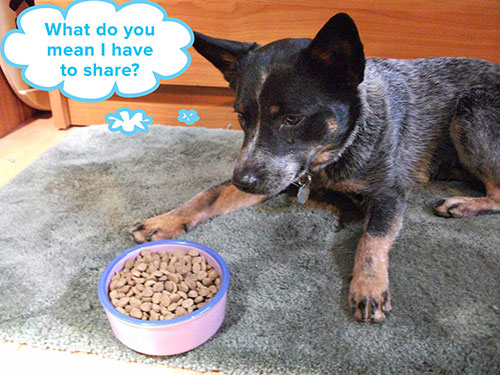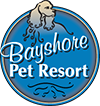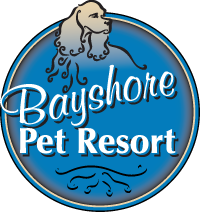 It’s hard to imagine your family dog showing aggression, but changes in health or the home can lead to aggressive behaviors you haven’t experienced in the past. Curbing aggression as soon as you observe it is essential for keeping your family, other pets, friends and your dog safe. Recognizing and understanding what factors trigger aggression can often help in turning the bad behavior around. Below are 10 common causes of aggression in dogs.
It’s hard to imagine your family dog showing aggression, but changes in health or the home can lead to aggressive behaviors you haven’t experienced in the past. Curbing aggression as soon as you observe it is essential for keeping your family, other pets, friends and your dog safe. Recognizing and understanding what factors trigger aggression can often help in turning the bad behavior around. Below are 10 common causes of aggression in dogs.
Territorial Aggression
Dogs can be very territorial, defending any area they consider to be their domain. At home, this aggression can present itself as growling, barking, snarling, or nipping at visitors coming inside. Wherever a dog shows territorial aggression, it usually appears along the areas that a dog patrols as his or her turf.
Protective Aggression
Your dog’s ancestors lived in packs. As part of pack behavior, if any member is in danger, the rest of the pack rushes in to protect him or her. Today, you and your family are your dog’s pack, and that same instinct to protect pack members is alive and well. If your dog senses that you are vulnerable, he or she will present aggression to protect you. This can cause problems when visitors and anyone who isn’t a member of the family enters the home.
Possessive Aggression
Similar to territorial aggression, possessive aggression arises when a dog is protecting something he or she thinks they own, such as their food and water bowls, bones, toys, beds, blankets and more. Though they may no longer need the survival instincts that their ancestors possessed, dogs still have the instinct to protect their resources from anything they consider a threat, including people and other animals.
Fear Aggression
This is a flight or fight reaction. When dogs feel threatened, they prefer to escape and hide in a place they feel safe. However, if cornered or trapped, the dog may be forced to go into fight mode instead and can cause harm to whoever may be unintentionally trapping them. This type of fearful aggression is characterized by quick nips and bites because the dog’s instinct is to attack then retreat quickly.
Defensive Aggression
Closely related to fear aggression, this occurs when the dog decides that the best defense is a good offense. Both fear aggression and defensive aggression occur when the dog feels cornered or threatened, but the difference is in how the dogs react to it. The defensive dog will deliver the first strike at the person who threatens them. A dog showing defensive aggression will only retreat if the threat subsides.
Social Aggression
Social aggression occurs when a dog perceives him or herself as the alpha-dog and shows aggression towards family members (members of the pack) if challenged. These dogs are often very affectionate toward family members but can be provoked if they believe someone “below” them has overstepped their bounds.
Redirected Aggression
Have you heard the warning to never try to break up a dogfight with your bare hands? Redirected aggression occurs when a dog is agitated by something, but then another person or animal gets in the way and becomes the target of the aggression.
Sex Related Aggression
This is another area where instinct comes into play. Male dogs that have not been neutered will compete for females in heat. Intact females will seek out males when they are in heat, willing to fight with any other females that get in the way.
Predatory Aggression
Does your dog chase and attack fast-moving things (think bicycles, joggers, other dogs playing)? This instinctive aggression comes from the dog’s predatory nature. In instances like this, the dog does not give warning of an attack, like growling or showing teeth. Instead he or she quickly strikes, like they are catching prey.
Pain Induced Aggression
An affectionate dog can suddenly behave with aggression when in pain. Arthritis, stomach pain or ill-fitting training equipment can all cause pain that can trigger aggression in dogs.
What can I do?
Removing the cause of aggression — like avoiding crowded dog parks or protecting your dog’s safe spaces — is an important step in reducing aggressive behavior. A veterinary examination can uncover any medical causes of your dog’s aggression. Diagnosing pain inflictions and receiving treatment may alleviate aggression.
The next step is to talk to a behavior specialist and/or a trainer. Local trainers with experience in these areas can provide training tools and techniques to curb the aggression along with strategies for strengthening your relationship with your dog.
Addressing and stopping aggression will not only keep yourself, your family, and other people out of harm’s way, it will also keep your dog safe from any injuries that could occur during an aggressive outburst.

